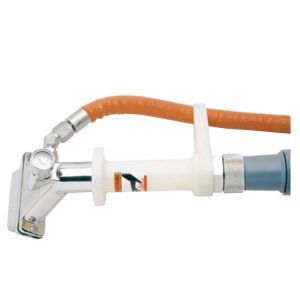
Effect of Steam Vacuum on Animal Carcass
Steam vacuuming uses steam and/or hot water to loosen soil and kill bacteria, followed by application of a vacuum to remove contaminants. The effectiveness of steam vacuuming depends on employee diligence of application and the operational status of the equipment. It is only useful when applied to specific areas of the carcass that are visibly contaminated i.e. it is not conceivable to ‘vacuum’ the whole carcass.
Steam vacuum systems are used for removal of wool fibres and wool dust from sheep carcasses but they are used infrequently as interventions for beef sides. AQIS Meat Notice 98/1 states that the unit must be used for localised ‘spot’ treatment only and should be applied to a particular area of the carcase surface for a five-second contact time.
The equipment is a hand held device consisting of a vacuum wand with a hot spray nozzle, delivering water at 88-94°C to the carcass surface under pressure, while simultaneously vacuuming the area . These authors found that the technique reduced the aerobic plate count by 3 log (6.2 log cfu/cm² to 3.2 log cfu/cm²), total coliform count by 4.0 log (5.0 log cfu/cm² to 1.0 log cfu/cm²) and E. coli count by 4.0 log (4.8 log cfu/cm² to 0.8 log cfu/cm²) on artificially inoculated beef short plates. Other researchers have found aerobic plate counts and total coliform counts to be reduced by 1.1-2.3 log and 1.2-2.2 log respectively using two different hot water/steam vacuum systems, Some bleaching of the carcass surface was noticed using the system, but this was not a permanent discolouration. Further trials have shown steam vacuuming to be very effective at reducing the number of E. coli O157:H7 on beef


